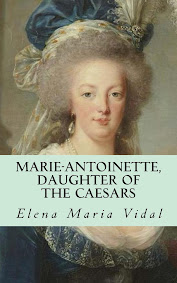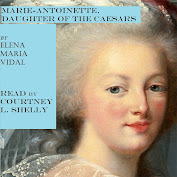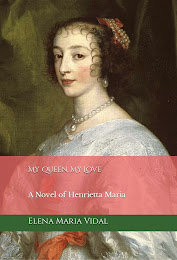 |
| Ceiling of Chapel Royal at St. James |
 |
| The Queen's Chapel at St. James |
One of the chapels was historically for the Catholic Stuart queens, beginning with Queen Henrietta Maria. From Living London History:
St James’s Palace was constructed on the orders of King Henry VIII from 1531-1536, on the site of what had once been a leper hospital, dedicated to St James the Less. The leper hospital was later converted into a convent and then dissolved by Henry as part of the Dissolution of the Monasteries.
A significant proportion of Henry VIII’s original palace survives including the gatehouse, the chapel, turrets and various state rooms. Henry had the palace built as an escape from Whitehall, where he could spend time with his new bride Anne Boleyn. She never saw it completed however, as she was executed two years before it was finished.
After much of Whitehall Palace burnt down in 1698, St James’s Palace became the official residence of the monarch. It remained so until 1837, when Queen Victoria moved into Buckingham Palace. St James’s Palace is, however, officially still the most senior royal palace. It is where the Accession Council meets to proclaim a new monarch and ambassadors/high commissioners in the UK are accredited to the Court of St James’s. (Read more.)
From Architectural Musings:
Under the protection of England’s three Catholic Queens, Catholics were able to practice their rites “collectively, publicly and theatrically” (Frances E. Dolan, “Gender and the ‘Lost’ Spaces of Catholicism”, Journal of Interdisciplinary History, Vol. XXXII No. 4, Spring 2002, pp. 641-665). The Catholic Chapels Royal held what Simon Thurley has described as “a central position in the choreography of the Court” (Simon Thurley, “The Stuart Kings, Oliver Cromwell and the Chapel Royal 1618-1685” Architectural History, Vol. 45, 2002, pp. 238-274). To Catholics, such devotional spaces were saturated with meaning and their establishment at the centre of the Royal Court imbued them with a sense of hope that the political and social position of English Catholics could be restored. To the Protestant observer, however, the mere presence of Catholics at Court offered the threat that they might seek to displace the political status quo. The Catholic Chapels Royal were thus politically charged spaces. As a result, they became a primary nexus for Protestant hostility which was to spill over into the wider malaise felt towards Stuart rule and in the end they proved to be at the centre of what became an aesthetic undoing of the Stuart dynasty itself. Of the three Catholic Chapels Royal constructed after 1620 at St James’s Palace, Somerset House and Whitehall, only the Queen’s Chapel at St James’s has survived largely intact.
The origins of the Chapel lie in that most farcical of abortive political alliances: the Spanish Match. Upon his accession to the English Crown, James I was keen to bring an end to the Anglo-Spanish war which had doggedly persisted during the latter reign of Elizabeth I. In addition to ending the financial drain of the war, James I was keen to characterise himself as a bringer of peace and prosperity to his newly united Kingdoms and, as heir to Mary Queen of Scots whose execution had provided the propagandised cause of the conflict, he was perfectly placed to offer terms. Peace was secured under the terms of the Treaty of London signed at Somerset House in 1604. Popular reaction to the peace can be fathomed by an examination of The Somerset House Conference, a painted record of the signing of the Treaty. (Read more.)
 |
| Queen Henrietta Maria |
Many more pictures available from Unofficial Royalty.
More on the Palace of St. James, HERE and HERE. A novel on Queen Henrietta Maria, HERE.

















No comments:
Post a Comment